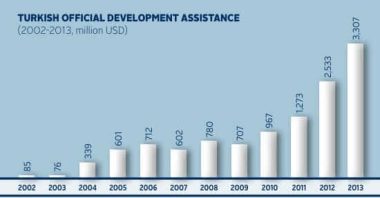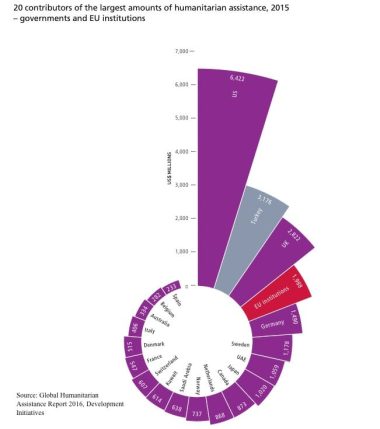Lately, a self-righteous trend of asking Palestinian speakers and guests ‘Do you condemn Hamas?’, in light of the organization’s Operation Al-Aqsa Storm on October 7, is sweeping across Western media outlets. While Palestinians have differing opinions about Hamas, the question hits a nerve even with those who do not support the organization. Ideally, it should be needless to say that this question is both insensitive, and comes off as ill-willed.
To Palestinians, who have been traumatized by the dynamics of the Israeli occupation and apartheid, years of collective punishment, and prolonged silence from the international community, it is difficult to provide an answer to a trap question asked by a press that looks for a cue to demonize Palestinians and justify their deaths and suffering by pointing to the actions of Hamas.
So, what is Hamas? Is Hamas a terrorist organization or a liberation organization? Officially, Hamas, or the Islamic Resistance Movement, is a Palestinian political and military organization that has played an increasingly pivotal role in the contentious dynamics of the Palestinian-Israeli issue. Understanding the fuss about Hamas requires delving into its origins, ideology, tactics, rise to power in Gaza, and the broader context of the Israeli-Palestinian conflict.
Founded in 1987 during the First Intifada, Hamas has evolved into a multifaceted entity. While it holds governance over a population exceeding two million Palestinians in the Gaza Strip, Hamas is most widely known for its armed opposition against Israel.
Hamas is recognized as a terrorist organization by numerous countries, some classifying the whole entity, while others just the military faction as such. It has fired rockets and mortars into Israel since the group took over the Gaza Strip in the mid-2000s in claims of resistance against Israeli occupation.
The most striking assault in terms of strategy and scale is the recent Operation Al-Aqsa Storm, which was launched as a reaction by the organization against the increasing harassments on the Al-Aqsa Mosque, the intensifying systematic nature of the occupation, and the trend of normalization between the countries of the region with Israel, according to experts.
A majority of the literature focusing on Hamas is through a simplistic western lens. This month’s bundle attempts to provide books that reflect mixed views about the organization, covering both journalistic and scholarly perspectives. Here’s what to read to gain a deeper and nuanced understanding of Hamas’s place in one of the most enduring crises of our time.
Where to begin? In an updated and fully revised edition of Hamas: A Beginner’s Guide, professor of Middle Eastern Studies, Northwestern University in Qatar Khaled Hroub provides an easily approachable introduction to Hamas in a straightforward Q&A format. This book takes readers through Hamas’s history, core beliefs, and its political agenda, offering valuable insights that are often missing from conventional news reports.
Hroub meticulously covers major events that have shaped Hamas’s trajectory, such as the crucial January 2006 elections, the evolving relationship with Fatah, and the 2008 Israeli Gaza offensive. Furthermore, the book delves into the intricacies of Hamas’s ideology by closely examining its charter, socio-economic strategies, and stance on Israel. Hroub goes beyond mere facts and figures and explains the underlying reasons for Hamas’s popularity, shedding light on the nuanced aspects of this influential organization.
Khaled Hroub, Hamas: A Beginner’s Guide (Pluto Press, 2010) ISBN: 9780745329727, 224 pages
Hamas Contained provides a thought-provoking perspective on an organization that has long been a subject of controversy and oversimplification. Author Tareq Baconi challenges the prevailing narrative that has demonized Hamas in both media and policy debates. Rather than resorting to simplistic accusations, he offers an in-depth exploration of this controversial organization. Baconi’s work, based on interviews with Hamas leaders and internal publications sheds light on the organization’s evolution over three decades.
He argues that Hamas cannot be neatly classified as either a democratic political party or a terrorist group. Instead, that it emerges as a complex liberation organization deeply rooted in the Palestinian nationalist cause. This perspective calls for a more comprehensive understanding of Hamas and its role in the Palestinian struggle.
Baconi traces Hamas’s transformation from a fringe military resistance group to a political entity attempting to govern. He emphasizes the need to challenge the conventional understanding of Hamas, highlighting how the group’s ideology, at times, poses a threat to the broader Palestinian cause and to its own legitimacy.
Crucially, the book scrutinizes Hamas’s reliance on armed struggle as a means of achieving liberation. It argues that this strategy has faltered in the face of a relentless occupation designed to fragment the Palestinian population.
Under Israel’s strategy of managing the conflict rather than resolving it, Hamas’s demand for Palestinian sovereignty becomes effectively neutralized, especially in the confines of Gaza. This stalemate perpetuates a cycle of brutality, allowing for the collective punishment of millions of Palestinian civilians. The book raises important questions about the impact of ideology, governance, and armed resistance on the quest for Palestinian self-determination.
Tareq Baconi, Hamas Contained: The Rise and Pacification of Palestinian Resistance (Stanford University Press, 2018) ISBN: 9781503632622, 368 pages
In The Foreign Policy of Hamas, Leila Seurat conducts a comprehensive analysis of Hamas’s international relations based on extensive fieldwork and interviews with Hamas officials across different locations, and insights from video conferences involving West Bank, Gaza, and Diaspora Palestinians.
Despite international boycotts following its 2006 electoral victory, Hamas has emerged as a significant global player. The book explores how Hamas strategically uses Palestinian internal issues to gain international legitimacy and competes with political rivals on the Palestinian stage through its interactions with non-Palestinian actors.
Seurat’s work reveals the strong link between Hamas’s foreign and internal policies, both driven by the quest for global recognition. The book dissects Hamas’s political strategies in dealing with Israel and other nations. It covers pivotal moments, such as the Trump administration’s ‘deal of the century,’ Israel’s Jordan Valley annexation plan, the impact of the UAE-Israel normalization accords and the COVID-19 pandemic.
Leila Seurat, The Foreign Policy of Hamas: Ideology, Decision Making and Political Supremacy (I.B. Tauris, 2022) ISBN: 9781838607449, 312 pages
Paola Caridi, an Italian journalist and historian, provides a compelling account of the rise of Hamas in her book Hamas: From Resistance to Government. When the organization scored a victory on the 2006 elections, it sent shockwaves through the Western world. Caridi delves into the critical questions that arose at the time: How did a majority of Palestinians come to support an organization often labeled as extremist, and how would Hamas’s newfound political power impact the broader Israel/Palestine conflict?
Caridi offers an understanding of the complex sentiments among Palestinians who rallied behind a government that endorsed armed resistance. Through on-the-ground research and interviews with Gaza residents and Hamas leaders, the book traces the history of Gaza from its golden age as a bustling port city to the formal emergence and gradual militarization of Hamas. The book strikingly includes a chapter on Operation Cast Lead, startling revelations from WikiLeaks, and the Cairo Revolution.
Paola Caridi, Hamas: From Resistance to Government (Seven Stories Press, 2012) ISBN-10 1609803825, 416 pages
Hamas: A History from Within delves into the multifaceted goals of Hamas, both in the short term and long term. In the immediate sense, Hamas aims to expel Israeli forces from the West Bank and Gaza, employing a combination of tactics that include attacks on Israeli military personnel, settlers in the Occupied Territories, and, more controversially, targeting civilians. Simultaneously, it nurtures the long-term ambition of establishing an Islamic state encompassing historic Palestine.
Hamas gained power and influence, particularly as Israel systematically dismantled the power structure of the secular Palestinian Authority led by Yasser Arafat. As a grassroots organization, Hamas has garnered significant respect among Palestinians due to its perceived lack of corruption.
Tamimi also delves into Hamas’s relations with Jordan, documenting Hamas’s constrained relationship with the Jordanian government. He traces the origins of Hamas within the Muslim Brotherhood, shedding light on the influence of its exiled leadership located in Syria and other regions. It also clarifies the internal structure and political objectives that guide the organization.
The book divides the organization into two main sections, with one responsible for establishing crucial institutions like schools, hospitals, and religious centers, while the other oversees military operations and acts of terrorism through its covert armed wing, the Izzedine al-Qassam Brigades.
Azzam Tamimi, Hamas: A History from Within (Olive Branch Press, 2007) ISBN-10 1566566894, 372 pages
Hamas comes as a paradoxical organization, recognized as a terrorist organization employing terror tactics all the while securing democratic mandate to govern Gaza. It promotes the concept of an Islamic state while conducting its own internal democratic elections with the organization’s leadership largely composed of secular professionals. Moreover, Hamas vocally calls for the destruction of Israel, yet it has reluctantly committed to honoring previous peace agreements.
Jeroen Gunning’s insightful analysis in Hamas in Politics: Democracy, Religion, Violence reveals that many of these apparent contradictions arise from Hamas’s ideology, its local support base, and the unique political landscape of Israel/Palestine.
Drawing on interviews with members of Hamas and its critics, as well as a decade of close observation of the organization, Gunning provides an exploration of Hamas’s dual commitment to ‘God’ and ‘the people.’ This book offers an examination of what Hamas’s political practices reveal about its stance on democracy, religion, and violence.
Additionally, Hamas in Politics delves into Hamas’s internal organization; the methods by which its leaders are selected, and the decision-making processes within the group. Through this comprehensive examination, Gunning sheds light on the complex blend of ideology and realpolitik that characterizes Hamas’s role in the Palestinian-Israeli conflict.
Jeroen Gunning, Hamas in Politics: Democracy, Religion, Violence (Hurst Publishers, 2010) ISBN 9781849040297, 312 pages
Read: Ten Myths about Israel
Although not necessarily about Hamas, Loren D. Lybarger’s Identity and Religion in Palestine: The Struggle between Islamism and Secularism in the Occupied Territories is a refreshing break from the two-dimensional thinking about Palestinian politics.
Lybarger’s provides a deeply insightful exploration of how dynamics between the Islamist movement and secular-nationalist factions within Palestinian society dynamics have transformed the identities of ordinary Palestinians. Identity, Religion, and Palestine takes the reader through the turbulent landscape of Palestinian life, starting with the first Palestinian uprising, or intifada, of the late 1980s, through the subsequent Oslo Peace Process, its disappointments, and the resurgence of violence during the second intifada in 2000.
Lybarger rejects of simplistic dichotomies that often plague discussions of the Israeli-Palestinian conflict. He doesn’t force Palestinians into the oversimplified categories of pragmatists willing to accept territorial compromise and extremists advocating for armed struggle.
Instead, he takes the approach of listening to Palestinians themselves and, in doing so, uncovers layers of internal conflicts and divided loyalties that exist among individuals. Lybarger’s nuanced analysis humanizes the Palestinian experience, emphasizing the diverse array of opinions and aspirations that shape the identity and trajectory of the Palestinian people.
Lybarger’s research highlights a notable transformation in the core beliefs and group loyalties at both the individual and collective levels. It underscores how the convergence of identity and allegiance, coupled with the reshaping of convictions in the years following the intifada, has paved the way for an increased occurrence of shifts in factional memberships and loyalties. This model offers valuable insights into the dynamics that drive these changes and provides a deeper understanding of their causes.
(Originally published in 2007)
Loren D. Lybarger, Identity and Religion in Palestine: The Struggle between Islamism and Secularism in the Occupied Territories (Princeton University Press, 2012) ISBN: 9780691155425, 295 pages
Recommended











